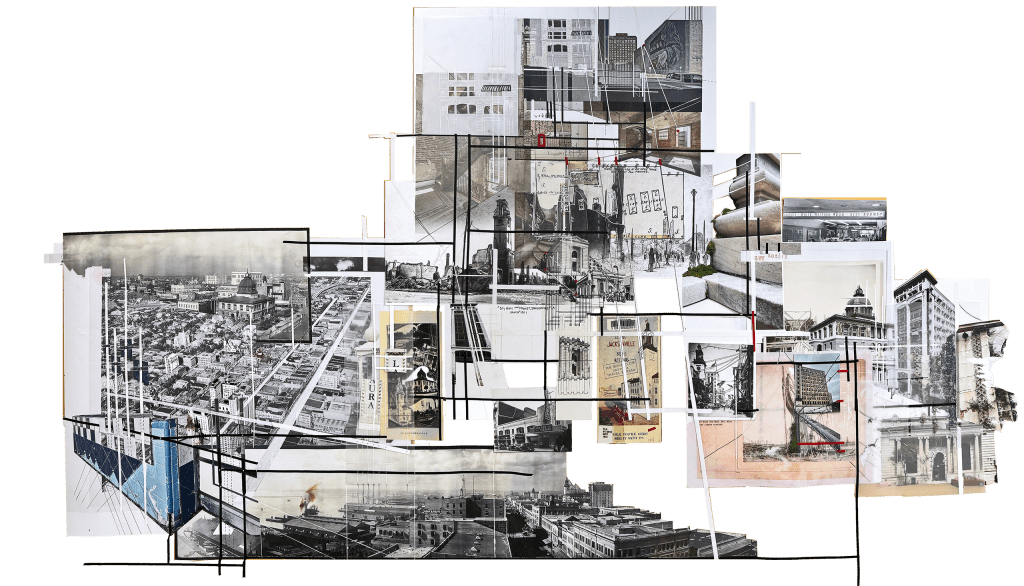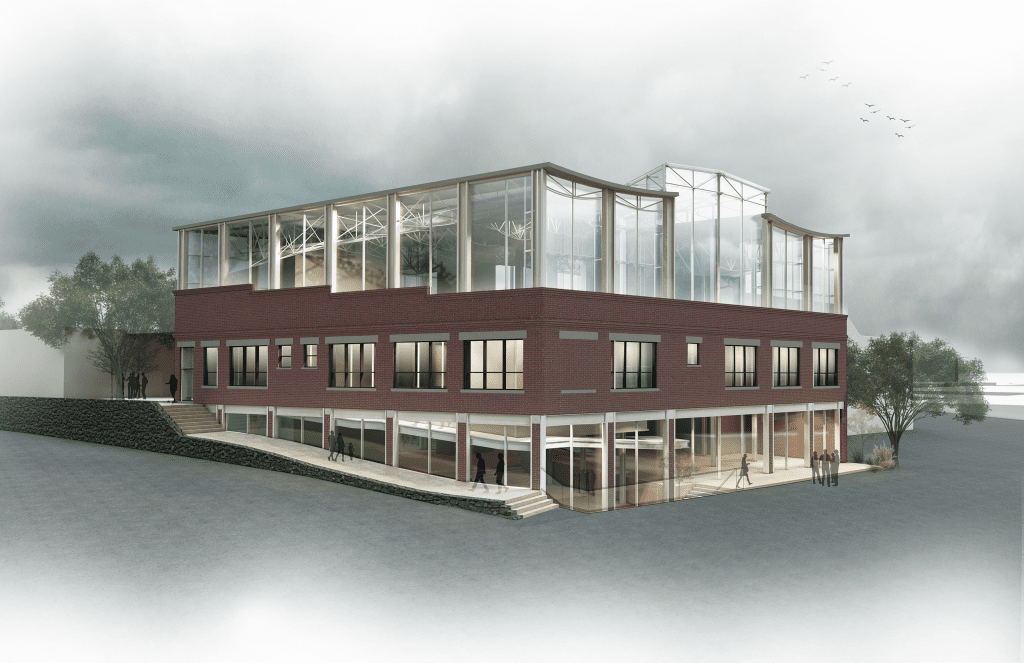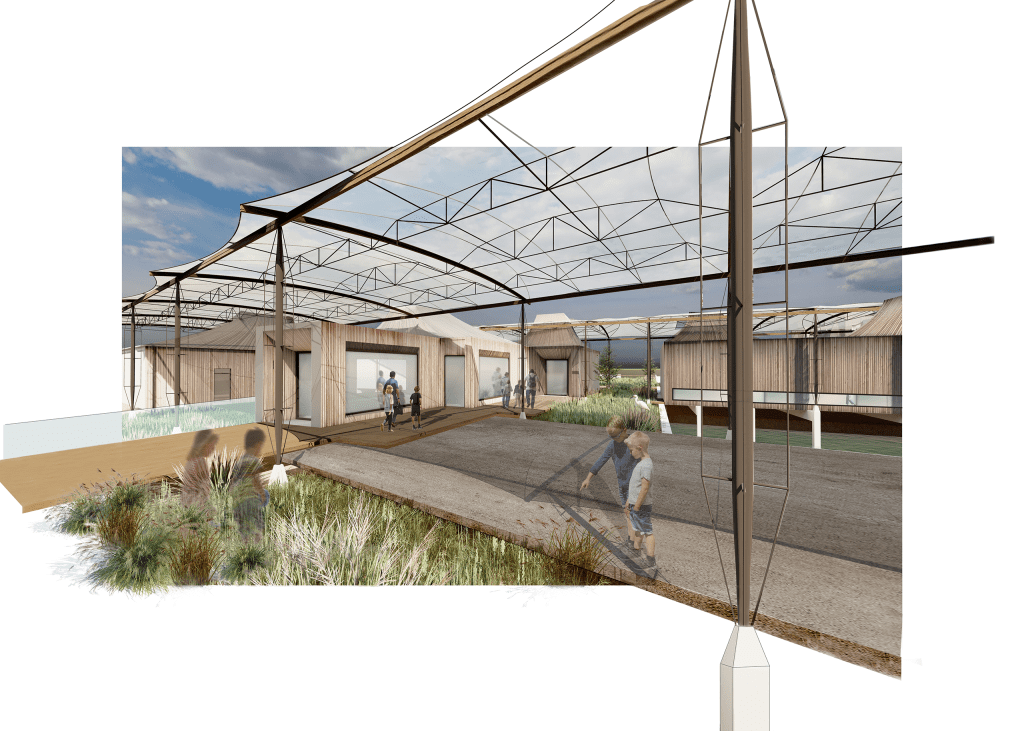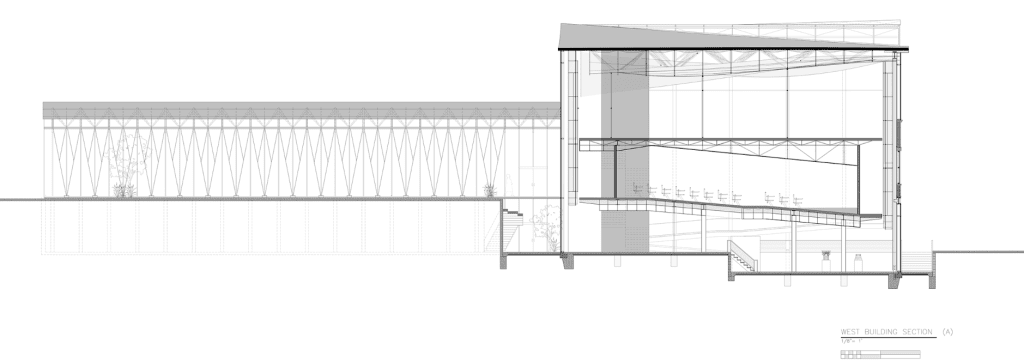Monday, June 3, 2024
By: Kyle Niblett
For those University of Florida School of Architecture (SoA) students looking to fulfill the requirements of a graduate degree, the decision must be made: Do I submit a thesis or a project in lieu of thesis (PILOT)?

For Sophia Hernandez, the decision was easy.
“PILOTs are more natural for architecture students to take on, as their design studios are formatted in a similar way,” she said. “The PILOT also allows for a deeper pool of topics, research methods, and media that sometimes can be difficult to evaluate in a purely written format of thesis.”
As a result of this choice, Hernandez became the first student from the UF SoA JaxLab to obtain her master’s degree with a PILOT. After originally obtaining her bachelor’s degree in design from the SoA in 2021, the St. Augustine native felt that in the world of remote learning thanks to the pandemic she had too little practical experience to remain in Gainesville for another two years at the main campus graduate architecture program. At the same time, she had the opportunity to join the Cronk Duch Architecture (CDA) team in Jacksonville. It came together so perfectly.
“JaxLab became a great option to obtain work experience and get the required accredited master’s degree for licensure in architecture synchronously,” Hernandez said. “Inside of three weeks of my initial interview with CDA, I sublet my Gainesville apartment, quit my job waiting tables, started a new job in a new city, and joined JaxLab. This was the most change I had ever experienced in such a short amount of time.”
Her main takeaways and findings from her PILOT was that architects, as practitioners of the built environment, have a responsibility to examine place as just as important of a design influence as program, code, site, client, and budget. When designers disregard context, she feels that they are not doing their part in trying to serve local communities, and regarding those communities’ histories.

She says it is not to say that architecture must be “historical” or “vernacular” in every project, but when a locality is disadvantaged and has lost its physical resources of its architectural/social history, the intentional examination of the tangible and intangible facets of place become all the more critical. As such, her PILOT was to examine how collage could be used as a research and design tool to better understand historic urban environments. She conducted a multi-scaled collage analysis of Jacksonville, examining the city’s neighborhoods as fragments of a “collage city” where intangible and tangible facets of place could be related on the same plane. While not being from Jacksonville, Hernandez came to appreciate this city as her home and felt a strong desire to see it grow and improve.
“I believe that JaxLab can be utilized to contribute to not only the professional architecture field local to Jacksonville, but also contribute to efforts of community and resilience,” she said. “Given this, being the first Graduate of JaxLab to do a PILOT is an incredible honor. I hope that the JaxLab graduates who remain in Jacksonville will take on the charge to promote designs that are equally beneficial to the residents of Jacksonville as well as the clients who are commissioning these projects. Because JaxLab started out as a three-person cohort, watching it grow is incredibly exciting and bittersweet as I will be missing out on the day-to-day activity and advancement of the program.”
In true OneDCP fashion, Hernandez also pursued her own interdisciplinary certificate in historic preservation. This required that her PILOT in some way had to be topically relevant to the certificate courses. To do that, she spent a summer at DCP’s Preservation Institute Nantucket (PIN), receiving the required six credit hours for eight weeks on the island. There, she chose to research change-over-time on Nantucket by creating a graphic timeline to show the impacts of use and iterations in architecture of the Surfside Live Saving station at Surfside Beach established in the 1700s. This involved modeling the eras and phases of the building while researching the development of Nantucket around the changing uses of the station.
Now with CDA as a project designer, she is using her education from JaxLab and PIN to help her workplace with work in historic overlay districts, specifically in America’s Oldest City. With a desire to do adaptive reuse projects in the future, Hernandez is helping CDA take traditional foundations of proportion, rhythm, and material behaviors and apply them to their contemporary work as to create modern architecture that is still scaled to the person.

“This is a sphere of design I feel very comfortable in, as my UF education serves well in contemporary architectural language, and my time at Cronk Duch has cultured a robust knowledge of residential design.”
When asked, she gives full credit to JaxLab for her professional success. Hernandez believes it helped her prepare to be a local professional through living, working and researching in Jacksonville. After all, two of the three studio design projects were in Jacksonville, and she used Jacksonville as her primary case study for her PILOT. She credits Duval County for teaching her how to drive her own research for design. Having made history at JaxLab, she fully understands the legacy she leaves behind now.
“Through timing and my own leap of faith, I am very proud that I could contribute along with Kyle O’Quinn to JaxLab in such a meaningful way,” Hernandez finished with. “With the circumstances being what they were, I was able to leave my own small imprint on the program as opposed to just be a participating student passing through.”

Q&A with Sophia Hernandez
What were your favorite courses or work done as a JaxLab student?
While I did not have a favorite course, I believe some of my best design work emerged from my second and third grad design studios. Through these projects, I was able to expand upon my personal ability to make dynamic sections, where the design feature did not occur at just a roof or wall but turned on to all vertical and horizontal surfaces. The two project sites were at the west shipyards on the north bank of Jacksonville’s St. Johns River, and an adaptive reuse building on the fringes of the touristed historic river walk in Savannah, Georgia. Both of these studios served as explorative case studies for my PILOT where I spent time at the front end of each project researching place through collage and letting this saturate my design approach for the projects.
What would you tell prospective students who are thinking about attending JaxLab?
I would tell prospective students to come to JaxLab prepared to split their time between working and school. I strongly recommend this experience, as the learning that takes place in one realm only serves to enhance or feed into the other. I would also recommend their personal exploration of who they think they are as a designer. This will serve their PILOT/Thesis which in turn can contribute to their career.
What was your favorite memory at JaxLab and why?
My favorite memories at JaxLab always revolved around the sense of community generated from the studios, whether that was during site visits, intensives, or teaching. Though we were a small group, this studio culture contributed to each of our successes for each studio project as well within my own PILOT.

What is the one thing you know now that you wish you would have known about your first day at JaxLab?
Upon my first day at JaxLab, I wished I knew to have faith in the process and not to get too worked up about where I was within my career. Working during school sometimes confused the fact that I was still a student, and I often had to remind myself of this. With that being said, I am glad that I was still able to embrace the freedom and flexibility that comes with being a student.
How important is the UF network of graduates across the globe?
The UF network of graduates across the globe is certainly a privilege to be a part of. You never know when an academic connection will relate in the professional field, and I have certainly benefited from this network in my own work in Jacksonville and in Florida.
Is there anyone you want to thank for this accomplishment?
I am indebted and sincerely thankful to my family for their unbounded love and support. I would also like to thank professors Frank Bosworth, Michael Montoya, Stephen Bender, and Lisa Huang for their unique dedication to the success of JaxLab’s beginning years. I want to thank them as well for their unwavering support and encouragement to me, specifically, throughout all my academic endeavors. Lastly, I would like to thank my bosses at Cronk Duch Architecture, Cliff Duch and Joe Cronk, who have enabled my academic success through establishing a flexible working environment that also could contribute to my learning every day.
Who were some of your favorite professors at JaxLab and why?
My favorite professors were Micheal Montoya, Lisa Huang, and Stephen Bender. Professor Huang was the first professor that took the time to drive to us from Gainesville once a week, which was in no way required for the structure of the studios. This studio cohort was made up of myself, Francesca Arnold, and Kyle O’Quinn. I feel very fortunate to have developed the connections with Lisa and my classmates, as the sense of comradery and community from this studio ultimately contributed to sustaining my commitment to JaxLab. Lisa’s efforts really made JaxLab feel like a tangible thing, rather than a remote branch of the Gainesville & Orlando campuses. Professor Montoya was my studio professor as well as PILOT committee chair. I cannot say enough about how much I feel that I have learned from him. Montoya took specific interest in each of our academic and professional pursuits and validated these interests as something that could be carried out into our careers. During my PILOT Committee meetings, Montoya & Bender had the unique ability to clarify my sometimes-muddled stream of consciousness regarding my PILOT, and constantly contributed to exciting discoveries of my own self through collage. Professor Bender was my committee co-chair and drove myself and my classmates to a higher standard of research and communication of such. I found myself the most challenged by Bender and credit my academic growth to his research classes and position as my co-chair.
